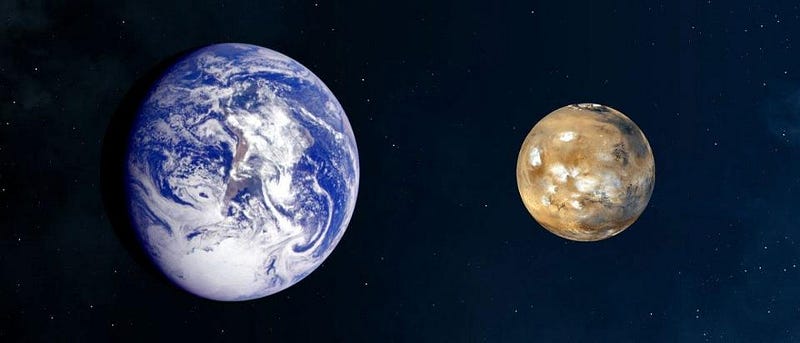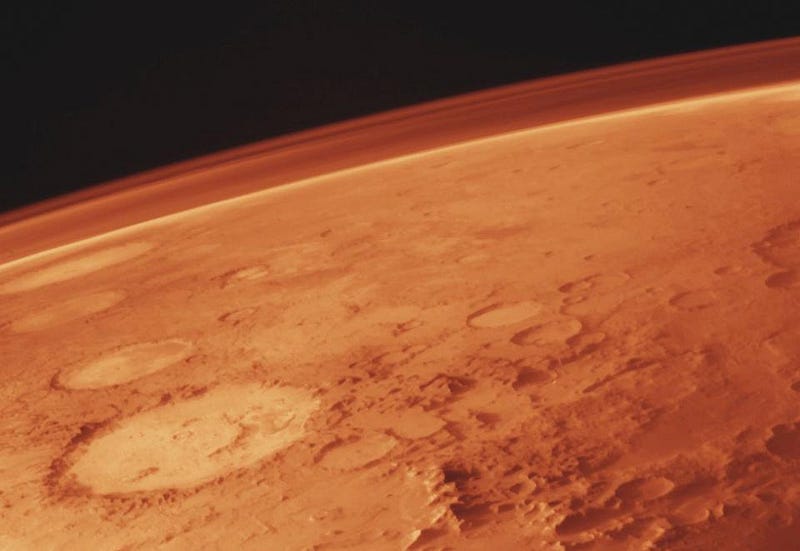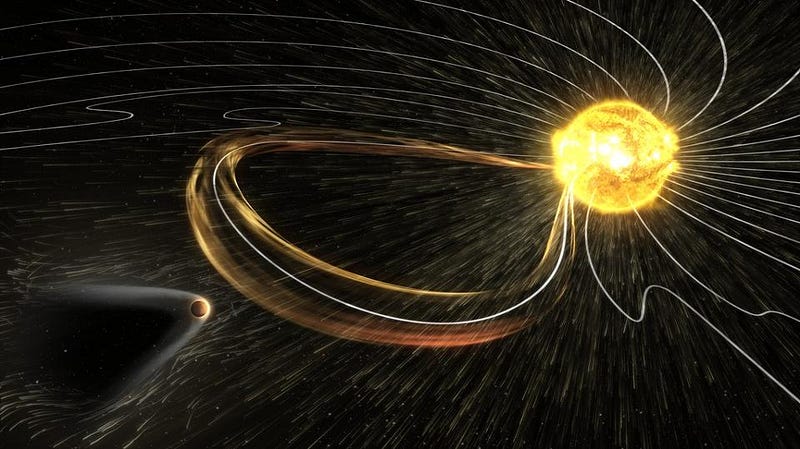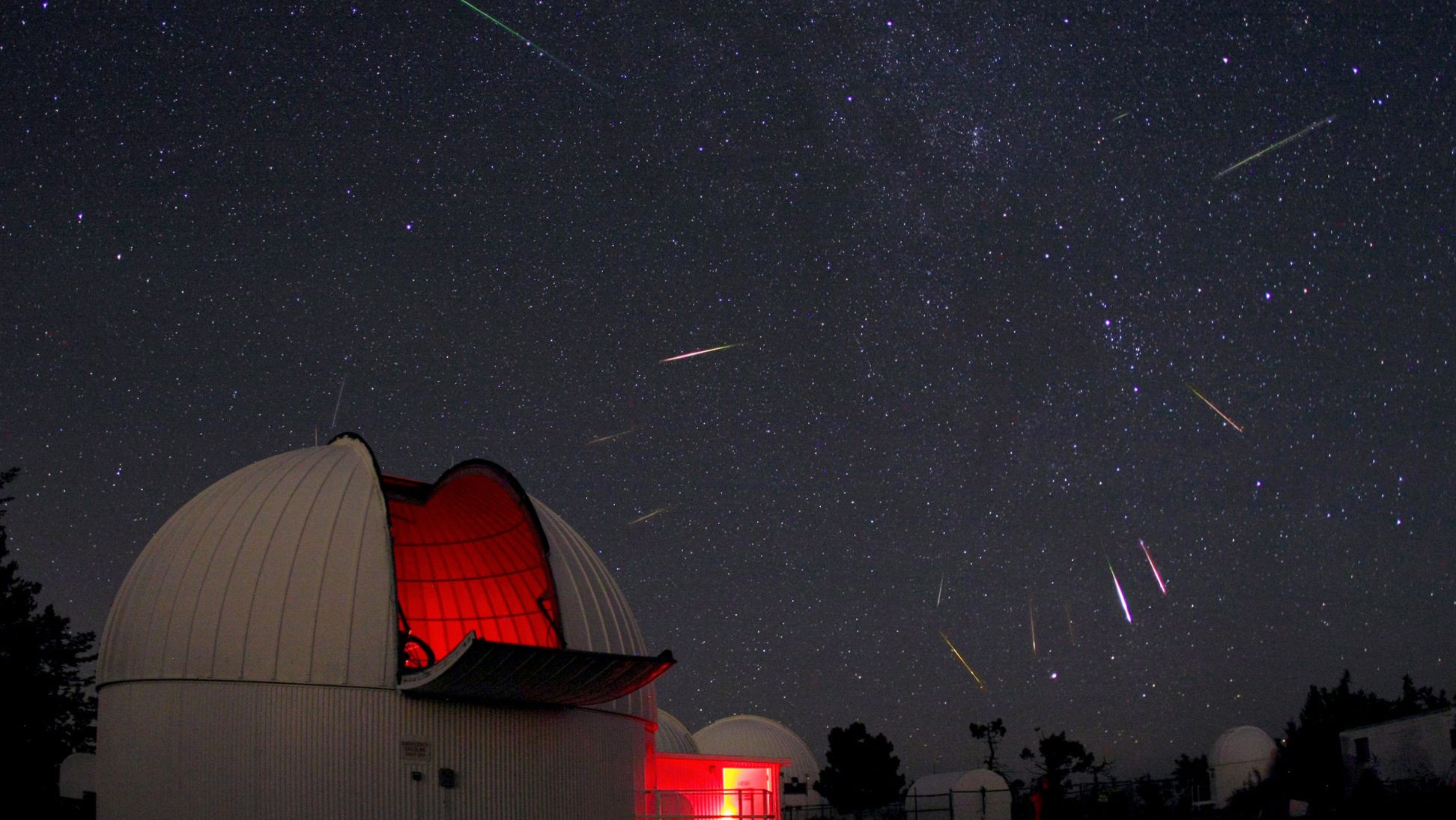NASA’s MAVEN discovers how Mars lost its atmosphere

The red planet once wasn’t so different from Earth. Here’s what happened.
“Mars’ atmosphere is so thin, you do not need a lot of streamlining. By the time the ship is going fast enough for air resistance to matter, it’ll be high enough that there will be practically no air.” –Andy Weir, The Martian, as spoken by Bruce Ng
In many ways, Mars is the most Earth-like planet we’ve ever examined up close, besides our own. With a history of a watery past, copious amounts of erosion, revealed sedimentary rock, volcanoes, clouds, icecaps, sand dunes and features like dried-up riverbeds, there’s an entire geological history there that’s arguably as interesting as our own planet’s. While the MAVEN spacecraft orbiting Mars just had a near-miss with Mars’ small moon, Phobos, it’s huge scientific achievement has been explaining how the red planet came to be the way it is today.
At just half the diameter and a few percent the mass of Earth, as well as its location at a significantly greater distance from the Sun, Mars suffered a very, very different fate from Earth. Whereas on our planet, oceans have thrived and so has life, Mars has become cold, dry and very, very desolate. Even the newfound presence of liquid water on the Martian surface doesn’t change the fact that Mars has evolved in an incredibly different way from Earth. Without a full understanding of how this happened, the very legitimate fear is that Earth could someday follow suit and wind up a desolate wasteland, where any surviving life will be relegated to extreme locales, rather than being ubiquitous everywhere we look.

NASA’s Maven mission was designed to figure out exactly how Mars became this way. By measuring how the Martian atmosphere interacts with the Sun, how particles — atoms and ions — are blown off and lost to deep space and by examining the solar wind, aurorae and other atmospheric effects, we can learn not only what’s happening to Mars at present, but how it became such a desolate world. In addition, Maven, launched in 2013, possesses the capability to communicate with rovers, landers and other satellites in orbit around Mars, meaning it can extract useful data from multiple points simultaneously, without the need for a 20-minute round trip of the signals to Earth and back.

In November of 2015, the Maven mission announced its first science results, and what we found was a tremendous confirmation of what we expected, along with some incredibly precise details:
- Water was abundant and active on Mars for the first few hundred million years of the solar system, with oceans, rivers, rains and more.
- However, at some point less than a billion years after Mars formed, its global magnetic field ceased to be, removing the planet’s main source of protection from the solar wind.
- As measured at the top of Mars’ atmosphere, the solar wind — fast-moving particles that are mostly protons — strikes the red planet at about 1,000,000 mph (447,000 m/s, or about 0.15% the speed of light), an incredibly fast rate.
- The particles it collides with wind up moving so quickly that they have enough energy to escape from Mars’ gravity; Mars presently loses about 100 grams (a quarter of a pound) of atmosphere every second.

In addition, solar flares/storms happen, and occasionally hit Mars’ atmosphere just as they do on Earth. While our magnetic field funnels those particles into the poles, creating aurorae, the lack of a global magnetic field on Mars means the entire planet feels the storm! The rate of atmospheric loss goes up by a factor of 10 or 20 (meaning instead of losing a quarter-pounder per second, you’re losing four to eight pounds with each tick of the clock) during even weak storms, and aurorae would be visible over the entire surface of the planet at night. That’s pretty spectacular!

We also learned that the atmospheric loss was gradual, and took tens to hundreds of millions of years, meaning two important things:
- If there was life on the surface of Mars early on, the atmospheric changes were gradual enough that we have reason to believe it could have evolved to find a suitable niche where it may survive even to the present day.
- If we decided to terraform Mars by artificially creating a dense atmosphere, it would survive for many millions of years, today, before we needed to replenish it.
Interestingly enough, if we do nothing to Mars, the current rate of loss of the atmosphere means that Mars will become completely airless in just another two billion years, turning this into a Mercury- or Moon-like world.

In addition, there could have been other factors at play in the past that Maven simply cannot tell us about. If Mars was bombarded by asteroids, that could have caused significant atmospheric loss; if solar flares were more common in the early days of the solar system (they ought to have been, but we don’t know), the early atmospheric losses could have been greater; other factors like sputtering, thermal escape and photochemical processes could have contributed to atmospheric loss. Maven only tells us one piece; it just happens to be the one we think is the most major one.
The great news is that Maven is performing not only exactly as expected, but in some ways is even exceeding its design efficiency, much like the Opportunity rover. The two biggest surprises are the diffuse, planet-wide aurorae, but also a phenomenon known as “transient metal layers,” which is what we see when interplanetary dust collides with Mars, leaving a thin layer rich in heavy elements (mostly metals) in the upper atmosphere. As the mission continues, we’re bound to learn even more.

The good news for us, mind you, is that the magnetic field here on Earth shows no sign of ceasing anytime soon. The dynamo in the core may do things like flip and reverse, swapping north-and-south magnetic poles, but we should continue to stay protected from the solar wind far into the foreseeable future: for billions of years (at least) to be sure. We could, conceivably, one day suffer the same fate as Mars, but our mass, our rotation and our active, dynamic core should keep the Earth’s magnetic field in business for at least as long as the Sun shines!
This post first appeared at Forbes, and is brought to you ad-free by our Patreon supporters. Comment on our forum, & buy our first book: Beyond The Galaxy!





